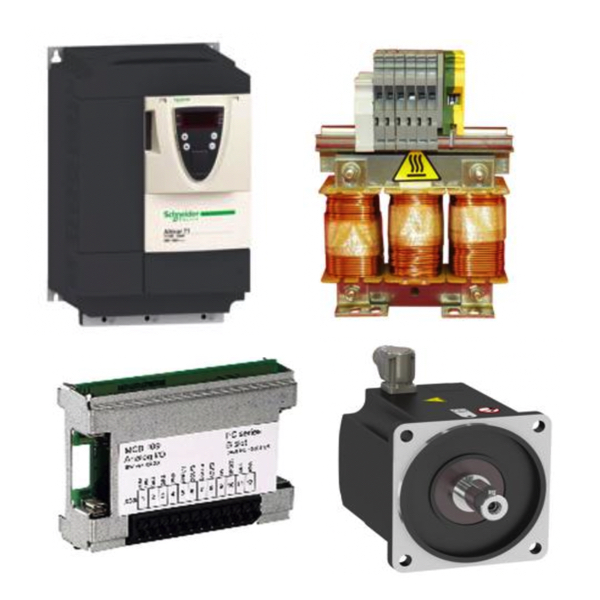VFD Accessories

VFD equipment and accessories are essential for controlling the speed, torque, and performance of three-phase AC motors in industrial applications. Variable Frequency Drives (VFDs) regulate motor operation by adjusting the voltage and frequency supplied to the motor, allowing precise speed control throughout startup, operation, and shutdown. This controlled operation reduces mechanical stress, limits inrush current, and extends motor life while improving overall system efficiency.
Compared to soft starters, which only control motor behavior during startup, VFDs provide continuous speed and torque control during the entire run cycle. This capability allows operators to match motor performance to process demands, improving productivity and reducing energy consumption. VFD accessories such as remote potentiometers, communication modules, braking resistors, line and load reactors, and filters further enhance system functionality, safety, and power quality. VFDs are widely used in conveyor systems, pumps, fans, compressors, and material handling equipment. In conveyor applications, adjustable speed control helps reduce wear during start and stop cycles and allows production speed to match throughput requirements. In pump and fluid handling systems, VFDs enable precise flow control and energy savings by eliminating the need for throttling devices. RSP Supply carries a full line of VFD equipment and accessories from trusted manufacturers including Danfoss, Yaskawa, Eaton, Benshaw, Schneider Electric, Invertek, and Toshiba to support reliable motor control solutions.
FAQs
Q: What is the purpose of a variable frequency drive (VFD)?
A VFD controls the speed and torque of an AC motor by varying the voltage and frequency supplied to the motor, improving efficiency and reducing mechanical stress.
Q: How is a VFD different from a soft starter?
A VFD controls motor speed during startup, operation, and shutdown, while a soft starter only limits current and torque during the startup phase.
Q: What accessories are commonly used with VFDs?
Common VFD accessories include braking resistors, line and load reactors, harmonic filters, communication modules, remote potentiometers, and enclosure accessories.
Q: What applications commonly use VFDs?
VFDs are commonly used in conveyors, pumps, fans, compressors, HVAC systems, and material handling equipment.
Q: Do VFDs help reduce energy consumption?
Yes, VFDs can significantly reduce energy use by matching motor speed to actual load requirements instead of running at full speed continuously.
Why Buy VFD Equipment & Accessories from RSP Supply
RSP Supply offers a comprehensive selection of VFD equipment and accessories from leading manufacturers including Danfoss, Yaskawa, Eaton, Benshaw, Schneider Electric, Invertek, and Toshiba. Our product lineup supports efficient motor control, extended equipment life, and reliable performance across a wide range of industrial applications.

